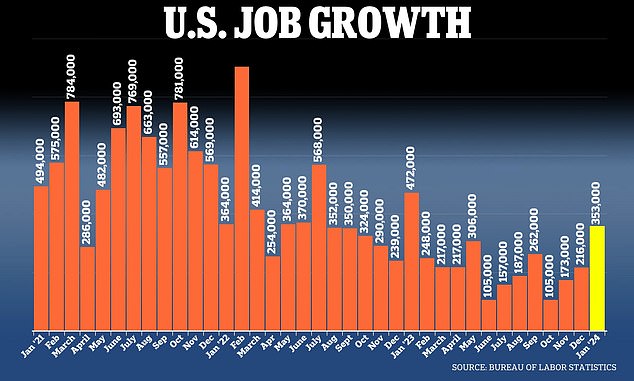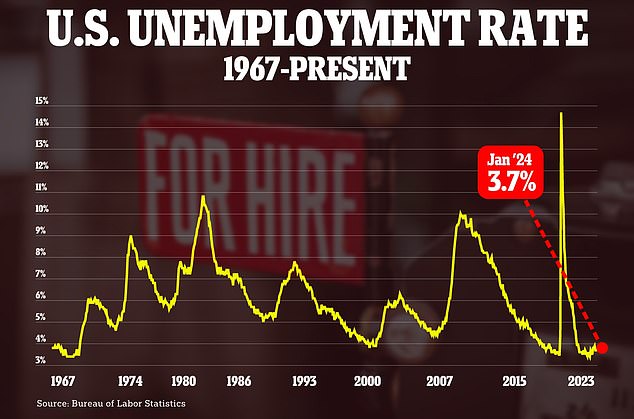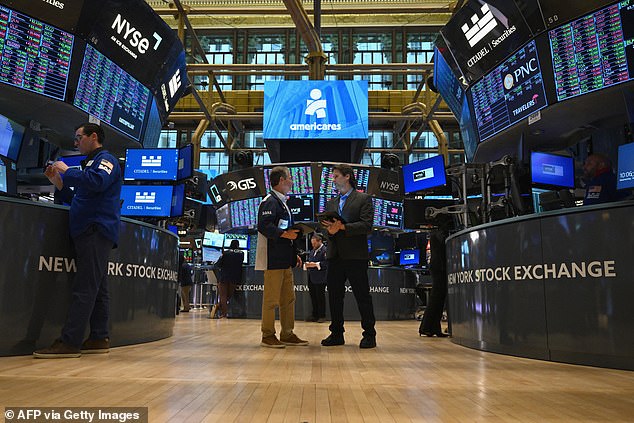Economics professor at small Texas college whose 2023 predictions were spookily accurate shares what she thinks 2024 has in store: Believes there’s good AND bad news ahead…
An economics professor at a small Texas university is now offering her insights on 2024 after making eerily accurate predictions in an economic forecasting study last year.
Belinda Román, an associate professor of economics at St. Mary’s University in San Antonio, offered some values that closely match the actual numbers the federal government reported last year.
She was among the top 71 business, academic and financial experts who made their predictions from the Wall Street Journal quarterly economic forecast survey in January 2023.
Before joining St. Mary’s, Román was a professor of economics at Palo Alto College in San Antonio and had worked in Latin America and the United Kingdom for both nonprofit and private companies.
Looking ahead to 2024, she again expects something different than the consensus of many forecasters, who share both good and bad news for the new year.
Belinda Román, associate professor of economics at St. Mary’s University in San Antonio, is now offering her insights on 2024 after making uncannily accurate predictions in an economic forecasting study last year

Looking ahead to 2024, she again expects something different than the consensus of many forecasters, who share both good and bad news for the new year
Román is optimistic about economic growth, employment and job growth in 2024, predicting GDP growth of 2.6 percent, significantly exceeding the consensus estimate of 1 percent.
‘I didn’t see us getting zero growth. “I thought that was way too pessimistic,” she said.
“I didn’t feel like we had lost any of that momentum yet, and it didn’t seem right to me to predict very low or zero growth.”
January’s unexpected job gains appear to be in line with Román’s forecast, as the US economy added 353,000 jobs, marking a promising gain to kick off 2024.
The unemployment rate also remained at 3.7 percent, according to Bureau of Labor Statistics data released Friday, defying expectations of a rise to 3.8 percent.
This marks the 24th consecutive month that the unemployment rate has remained below 4 percent – the nation’s longest stretch since the 1960s.
Román also expects higher inflation, but lower interest rates than other economists predict. That could make getting a mortgage cheaper for Americans hoping to get on the property ladder.
Her predictions come as economists speculated about how soon the Federal Reserve could start cutting interest rates.
At its latest meeting on Wednesday, the Fed voted to hold rates steady for a fourth straight time, keeping interest rates between 5.25 and 5.5 percent.
Federal Reserve Chairman Jerome Powell said he is encouraged about the economy and the economy’s downward trajectory inflation but warned that there is still a ‘way to go’.
He also ruled out the chance of an expected interest rate cut in March.
Román was also optimistic in early 2022 and 2023. Her projection of 2.8 percent GDP growth in 2023 closely matched the 3.1 percent reported by the Commerce Department.
She also predicted an unemployment rate of 3.4 percent, well below the consensus of 4.3 percent.
And she turned out to be right: The unemployment rate held steady at 3.7 percent by the end of the year, much lower than economists had predicted.

The US economy added 353,000 jobs in January, sending economists’ expectations soaring

The unemployment rate also remained at 3.7 percent, according to Bureau of Labor Statistics data released Friday

Román was also optimistic in early 2022 and 2023. Her projection of 2.8 percent GDP growth in 2023 closely matched the 3.1 percent reported by the Commerce Department.
But Román acknowledged the uncertainty ahead of the new year, citing politics as a major factor.
‘The real problem for me is still that political climate. “We don’t know if it’s Biden or Trump, and we don’t know how big the international impact will be,” she said.
‘Those are the two wild cards for me… But I still think we’re going to grow. We may not grow by 5, 6, 7 percent.’
Román told the WSJ that one of the tactics she uses is looking at moving averages and trend lines instead of models.
She often wonders what story the data tells, a technique she often passes on to her students at St. Mary’s, a Catholic liberal arts university in the Southwest.
She said, “A lot of students get lost in the technical, the mathematical, and forget that there’s a story behind it that involves people.”
“The math is great, but it’s people we’re talking about. People in the form of companies, in the form of communities, in the form of countries. So we always have to take that into account when we do the work.”
